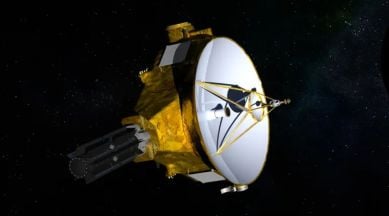NASA is planning to extend its New Horizons mission through the decade as the spacecraft explores the icy leftovers of our universe’s formation in the Kuiper belt.

NASA’s New Horizons mission was an interplanetary probe launched in 2006. The mission was originally scheduled to end in 2024 but now, the American space agency is deciding to extend the mission’s life span till it exits the Kuiper, which could happen in 2028 or 2029.
“The New Horizons mission has a unique position in our solar system to answer important questions about our heliosphere and provide extraordinary opportunities for multidisciplinary science for NASA and the scientific community. The agency decided that it was best to extend operations for New Horizons until the spacecraft exits the Kuiper Belt, which is expected in 2028 through 2029,” said ,” said Nicola Fox, associate administrator for NASA’s Science Mission Directorate, in a press statement.
You have exhausted your
monthly limit of free stories.
To continue reading,
simply register or sign in
Continue reading this and other premium stories with an Express subscription.
This premium article is free for now.
Register to read more free stories and access offers from partners.
Continue reading this and other premium stories with an Express subscription.
This content is exclusive for our subscribers.
Subscribe now to get unlimited access to The Indian Express exclusive and premium stories.
The New Horizon spacecraft was launched in 2006 and its primary mission was to explore the dwarf planet Pluto. But the spacecraft continued to venture further out and conducted a flyby of the Kuiper belt object Arrokoth.
Most Read
Both Pluto and Arrokoth are in the Kuiper belt, which is a donut-shaped region that consists of icy bodies. The belt could contian millions of frozen leftovers from the solar system. Starting 2025, New Horizons will focus on obtaining heliophysics data, which can be easily gathered when the spacecraft is in its extended low-activity mode of operations
https://platform.twitter.com/widgets.js
The future of the mission was in doubt after the space agency decided to extend the mission to 2024, proposing to transfer it to the NASA heliophysics division after that. Alan Stern, the mission’s principal investigator, rejected that move, according to SpaceNews. Stern argued that it would rule out any further work in planetary science by the original mission team.
NASA said that the new extended mission will be jointly managed by the planetary science and heliophysics division but it will still primarily be funded by the planetary science division.
© IE Online Media Services Pvt Ltd
First published on: 03-10-2023 at 18:07 IST






